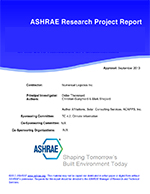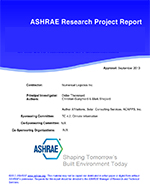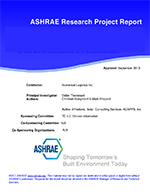-
-
Available Formats
- Options
- Availability
- Priced From ( in USD )
-
Available Formats
-
- Immediate download
- $32.00
- Add to Cart
Customers Who Bought This Also Bought
-

RP-260 -- The Effect of Radiant Cooling Panels on Tempera...
Priced From $32.00 -

RP-221 -- Heat Transfer and Pressure Drop in Condensing a...
Priced From $32.00 -

RP-224 -- Investigation of the Effect of Oil on Heat Tran...
Priced From $32.00 -

RP-228 -- Survey of Published Heat Transfer Coefficients ...
Priced From $32.00
About This Item
Full Description
This pilot study was conducted to determine if observed worker productivity under near-heat-stress conditions could be correlated with objective and subjective measures of the thermal environment. Measurements were obtained at two work stations in a hospital laundry room where six female workers performed both machine-paced and operatorpaced tasks. Objective measures of the thermal environment included air velocity and dry-bulb, dew-point and mean-radiant temperatures. These four factors, together with estimated values of the workers' activity level and the insulation value of their clothing, were combined as Standard Effective Temperature (SET*). Worker productivity was measured as the time required to perform a task. Subjective measures were obtained from the workers who responded to a set of polar-adjective scales which pertained to individual perceptions of productivity, thermal environment and state of well-being.
No significant relationships were detected by statistical analyses between overall worker productivity and SET* values at either work station. However, statistically significant differences in productivity were found for SET*, time of day, or time of week for two of the workers at both work stations; for two additional workers at one of the stations; and for eight of the twenty-nine tasks. No consistent patterns were detected in these results. Analyses of subjective data indicated that worker attitudes and perceptions of conditions seemed logical. These results suggested that the employees would work harder when the laundry load so demanded, independently of the thermal conditions to which they were exposed in the laundry.





